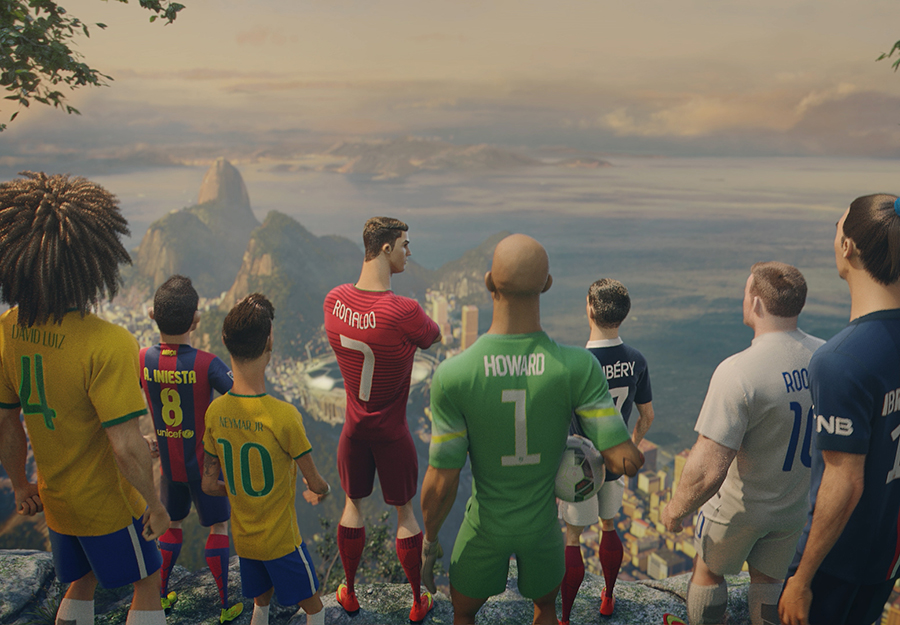-

-

-

-

-

-

-

-

-

-

-
-

-

-

-

-

-

-

-

-

-

-

-

-

-

-

-

-

-

-

-

-

-

-

-

-

-

-

-

-

-

-
-

-

-
 TOTW: Google's Project Ara Modular Phone May Be The Future Of SmartphonesOctober 30, 2014
TOTW: Google's Project Ara Modular Phone May Be The Future Of SmartphonesOctober 30, 2014 -

-

-

-

-

-

-

-

-

-

-

-

-

-

-
-
-

-

-

-

-

-

-

-

-

Posts tagged advertisements
The Monetization Conundrum Of Online Video
0With the possible exception of the Super Bowl, I’d bet it’s safe to say that nobody likes ads. Whether before a movie or video, in commercial breaks during television programs, or in the middle of your favorite podcast, nobody really enjoys being told to buy this product or use this service (often in a cringe-worth way) while they are enjoying their entertainment. Yet advertisements aren’t going away anytime soon; with the larger and larger audiences their ads are reaching, companies remain willing to allocate precious dollars to get their name out in every way they can. In the world of Internet publishing, ads have persisted as the staple of a creator’s income, despite significant shifts in the media landscape. But for online video, currently dominated by YouTube. advertisements have been a challenged revenue channel for creators hoping to earn a living.
I love YouTube and have a massive respect for the creators who have made it their full-time occupation to publish videos on the platform. These individuals spent an incredible amount of time and effort to become popular enough just to quit their day jobs and spend their time earning a living via YouTube. The sad part is that making a living on YouTube is harder than one might think. With popular YouTubers like PewDiePie making up to $7 million per year, it might be easy to regard YouTube as an easy path to fame and riches. But really, every YouTuber with even just 5,000 subscribers have put their heart and soul into their videos. As it is, money coming from ads just isn’t enough to allow YouTubers to start making videos full-time until they become very popular, a level which many never reach.
Let’s do the math. The average personal income in the United States is roughly $30,000. The current YouTube ad rate is a $2 CPM ($2 for every thousand views). To earn even the average U.S. income, a YouTuber creating weekly videos (a common schedule) would have to average nearly 300,000 viewers per video, an average usually only met by a YouTuber with around 2 million subscribers. (this varies from channel to channel) Of course, the rate at which you create videos is key in this calculation; if you make a video every day, the average view count drops to a more plausible 40,000. Compare that to the average CPM rate for TV, which is $19 (for an average 22-minute show). With that rate, you would only have to get 30,000 views per weekly video to reach the national average – much more sustainable.

Felix Kjellberg, aka PewDiePie, the most popular YouTuber on the platform. Last years, Felix sparked a small controversy when the public negatively reacted to his $7 million years income.
This isn’t just about YouTubers making more money because their media peers in television and film earn more. I’m not writing this out of pity for the struggling YouTubers who can’t earn a living wage yet are spending all their time trying to grow their audience. The reason the $2 CPM needs to be increased is because it simply isn’t enough to allow YouTubers to grow and make the great content we all want to watch. Take Olga Kay, a YouTuber with around 1 million subscribers across her five channels. In an article written in the New York Times, Olga talked about her hectic work schedule and about how “If we [her friends] were coming to YouTube today, it would be too hard. We couldn’t do it.”
Olga said in the article that she has made $100,000 to $130,000 every year for the last three years, which is a good income; yet she is still constantly stressed about finances, as much of that $100,000 goes straight back into her channels to pay for editors, equipment, etc. Let’s be honest: no one making twenty videos a week, almost three per day, especially with 1 million subscribers, should be that worried about finances.
This is the first part in Fast Forward’s two-part series on the YouTube’s advertisement and monetization conundrum. Stay tuned for the second article in the series over the next few days!

TOTW: World Cup Fever! The Best Star Studded World Cup Ads
010 years
There is no denying that the World Cup is the biggest sporting event of all. After all, football(soccer) is the world’s most loved sport. Sorry all you American football and basketball fans, but the World Cup blows both the Super Bowl and the NCAA Final out of the water by a order of magnitude. And, when the most people are watching, that can only mean one thing: ads. And lots of them. The Super Bowl is known for it’s great ads, but the World Cup once again destroys it’s Americanized equivalent, with better, more viewed and more expensive ads. Many sports companies (and non-sport) make incredibly star-studded ads to increase it’s overall amazement factor. In some it worked, in some it looked like they just added in the stars for the fun of it.
Neymar, Chicharito, Robin Van Persie, Gotze, Jozy Altidore, Schweinsteiger, Fabregas, Suarez, Demarcus Beasley, Sturridge, Rio Ferdinand, Baracry Sanga, Thierry Henry, Cristiano Ronaldo, Rooney, Ibrahimovic, Higuain, Eden Hazard, Pique, David Luiz, Iniesta, Pirlo, Tim Howard, Thibaut Courtois, Thiago Silva, Landon Donovan, Messi, Aguero, Ozil and more are featured in all these ads combined. Even Nicki Minaj, Dr. Dre, Lebron James and Michael Jordan are in some. If you know anything about soccer, you know that every single one of those players I just mentioned are in the top 50 players right now. So this must have cost a fortune. If they spent this big amount of money on one ad, you would think it would be amazing right? Well, some are and some aren’t, so I’ll let you decide. Here are the best of them:
Nike’s Last Game
Out of all the World Cup ads, this one is the best done. The animated short released by Nike depicts what would happen if clones of the best soccer players took the place of the original players because of their consistency. But, lead by the old Ronaldo, the original best 11 players from this world cup take on the clones. They really nailed the players personalities and bodies, creating a fun little short, promoting their new slogan, Risk Everything.
Beats’ The Game Before The Game
The newly acquired company Beats really went all out for this world cup. Their ad, chocked full of world-class players, is mainly featured by Neymar, and his father, who is saying dramatic and inspirational words of encouragement in between shots of the best players on the planet washing their socks and listening to Beats. A little overboard, but I have to say, the whole this is very dramatic.
EA’s Always In The Game
EA went for humor for their ad, and they nailed it. Perfectly. A a promotion for their World Cup version of Fifa 14, they had Landon Donovan, who made headlines for not being picked for the USA world cup squad, winning the world cup on Fifa. That’s funny, by itself, but they topped it off by Landon muttering under his breath, “I’m not going to brazil.” in the classic chant sung by fans. Well played EA, well played.
Nike’s Winner Stays
Another ad by Nike, but this time featuring a bunch of real, top-class players. Well, not at the start. The idea of this ad is that a group if 11 on 11 ametuer players, when they decide that the winner stays, can suddenly turn into players like Neymar and Pique whenever they feel like it. Handy. The camera work in this ad is great, having foreground people walk right in from of the camera so the young player can be switched out by Rooney or Eden Hazard. Very creative, and very well done.
McDonald’s Gol!
Like usual, McDonald’s made an ad that really had nothing to do with their chain of fast food resturants. Basically, a bunch of people were doing trick shots and fancy juggling in public. Sure, it may be fun and entertaining, but the only way you know it’s for McDonald’s is the big M logo at the end. Sigh.
Adidas’ The Dream
For some reason, Adidas decides that their commerical would be another star studded ad about Messi having an nighmare/dream thing about all the other players and whether he trained hard enough. Again, like Beats’ ad, it may be dramatic, but not a great way to depict the party attitude of the Brazilian stadiums and jumbotron gatherings.


